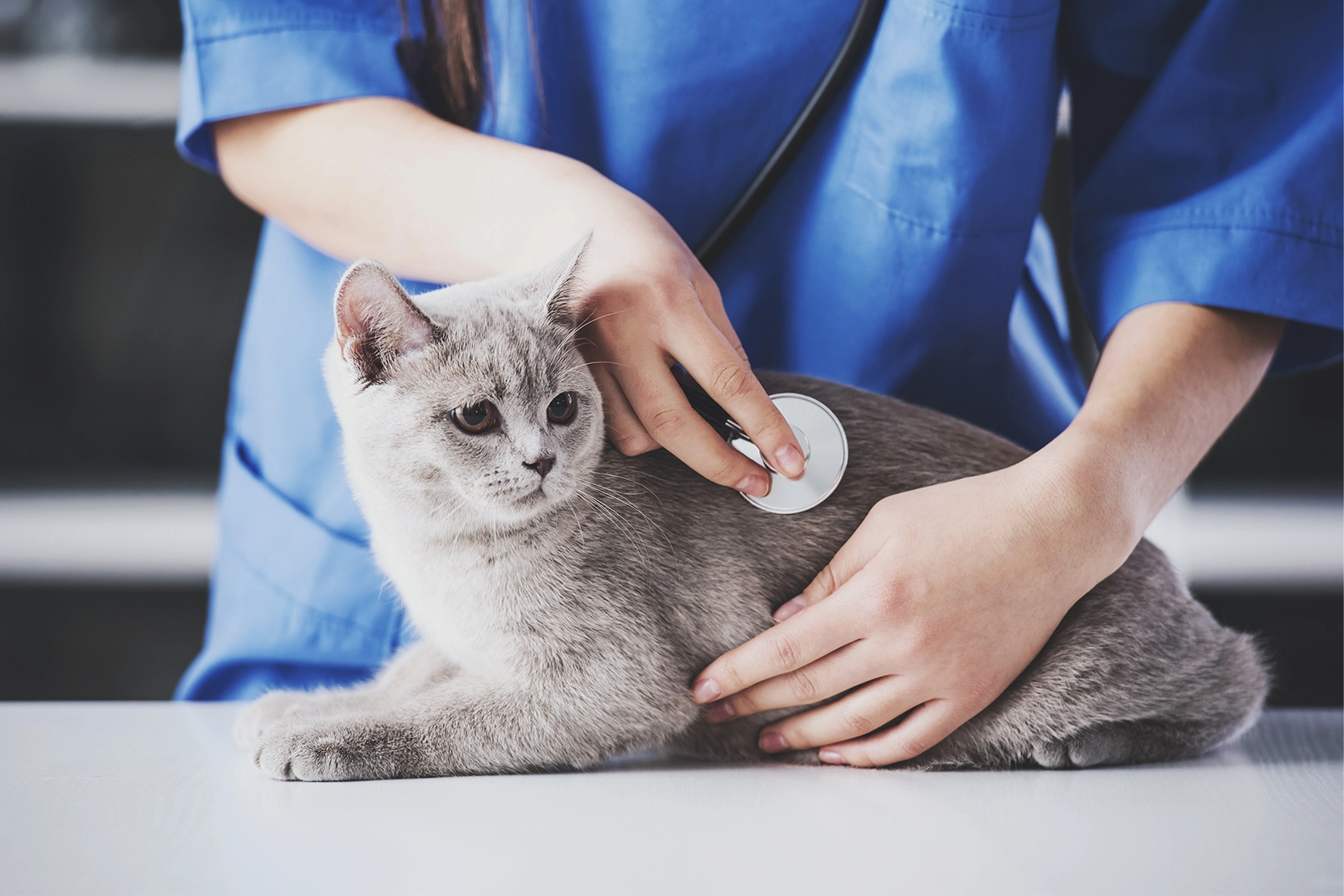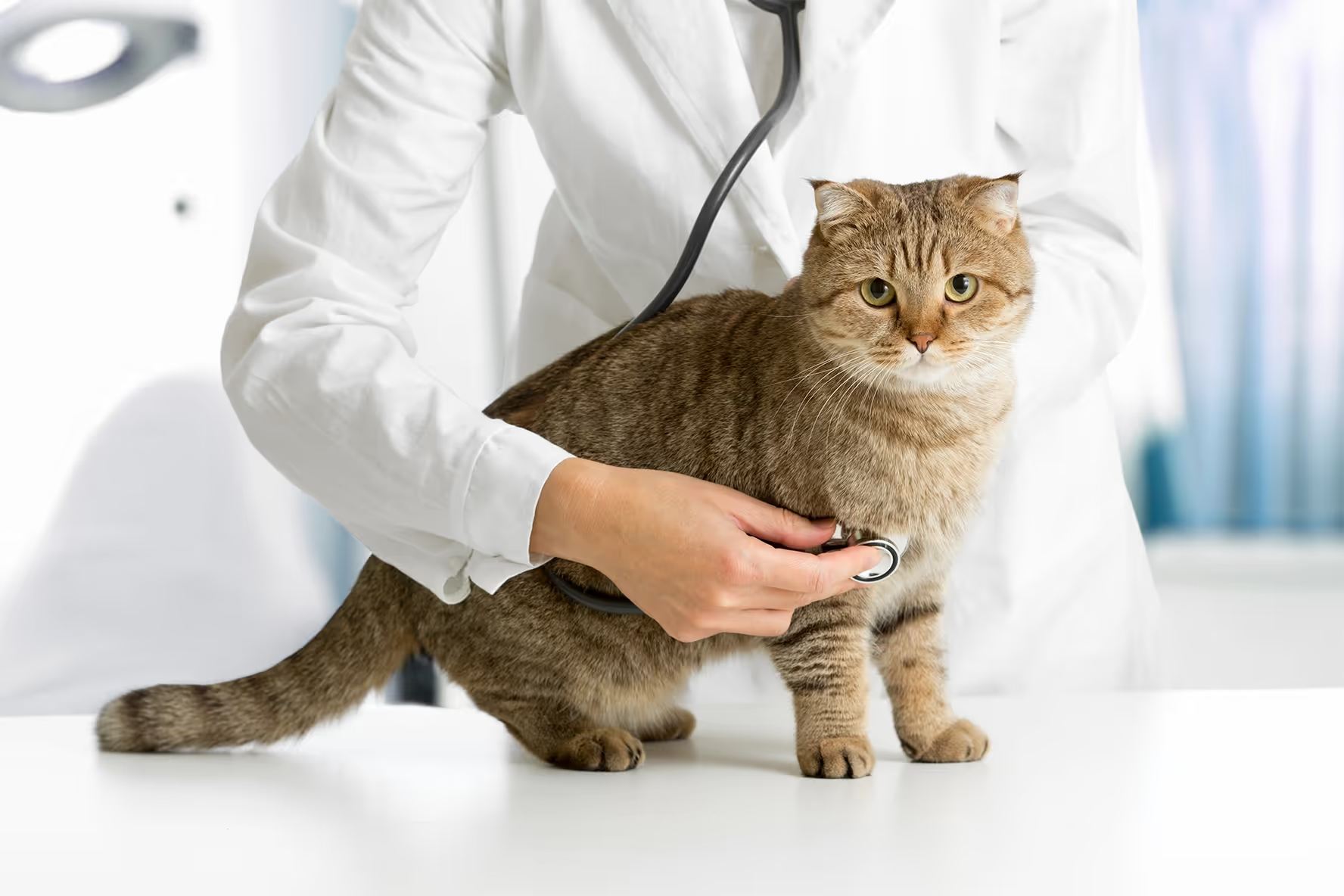
Receiving a feline lymphoma diagnosis can be overwhelming, but there are treatment options that help manage the disease. With the right care, your cat can live comfortably for as long as possible, despite the illness.
We explored some of the options for treatment in a previous post, but in this one, we’re going to dive a bit deeper into what a chemotherapy treatment means for your cat, and what you can expect.
Every cat is unique; just because they receive a similar diagnosis as another patient, doesn’t mean the exact same treatment will be effective. ImpriMed is working hard to gather enough information on feline lymphoma to help create an informed system that can guide vets to provide the most efficient and effective treatment for their feline lymphoma patients.
Chemotherapy Treatments for Feline Lymphoma
Chemotherapy is the most common and effective treatment for feline lymphoma for many reasons. Lymphoma is a systemic disease, meaning that it affects many parts of the body, including where its presence is not visible from the outside. Because of this, chemotherapy is the recommended treatment for systemic cancers because it can target the cancer cells throughout the entire body, rather than only impact those in a single area the way that radiation and surgery would.
Chemotherapy in cats is very different than in people. People often have a lot of side effects and illnesses due to treatment that we do not see as much in our furry friends. Cats tolerate chemotherapy very well and have a good quality of life at home. Because lymphoma is not curable, the cancer will always be present in your cat’s body. The goal of chemotherapy treatment is therefore not to cure the cancer but to bring it into remission. Once in remission, all of the symptoms that the cancer cells create will be mitigated, allowing a cat to lead a healthy, happy life.
Unfortunately, because cancer cells remain in the body, there is always the opportunity for them to resurface and affect the body again; if that happens it’s called a relapse, and treatment will be needed again to continue to prolong your cat’s life.
Recommended treatments based on lymphoma type
There are multiple different ways and locations for lymphoma to develop in your cat’s body, and each of them leads to different expectations and needs for treatment to be effective. You can learn more about the different types of lymphoma in one of our other blog posts.
The drugs used to treat an individual patient’s lymphoma should be based on that cat’s individual lymphoma diagnosis.
High Grade or Large Cell Lymphomas
High grade lymphomas—sometimes called large-cell—are faster acting than their low grade counterparts, therefore patients with this lymphoma often need a more aggressive treatment plan. Patients that don’t receive treatment will not survive very long after their diagnosis so getting treatment started quickly is imperative.
Chemotherapy drugs often used for high grade feline lymphoma are usually administered in a multiagent format, which involves giving multiple drugs on a set schedule in order for them to be most effective individually, as well as in a cohesive unit. The most common drugs to be included in those treatment protocols include L-asparaginase, doxorubicin, cyclophosphamide, vincristine, and prednisolone. These drugs are typically administered over multiple months.4
Survival Rate and Life Expectancies for Cats with High Grade Lymphoma
Overall, this multi-drug treatment plan is very effective; about 50-75% of cats that complete this treatment protocol will respond well to treatment, and about 25% of patients will achieve a complete remission. While the others might only achieve a partial remission, a significant increase in quality of life is expected.4
Survival time for cats that have high grade lymphoma and receive a multiagent chemotherapy treatment is expected to be within the range of 6-9 months, depending on several factors such as the severity of their diagnosis, their FeLV status, the primary site of the tumor, and how well they respond to therapy.5
However, though the aforementioned is typical, there have been some lucky cases where the patient achieved a complete remission and was able to survive 2 years or longer after treatment. Though these cases are rare and not the standard to be expected, optimistic and hopeful outcomes for treatment are worth sharing.6
Low Grade or Small Cell Lymphomas
With low grade lymphomas—sometimes called small-cell—the expectation for treatment changes. Low grade lymphomas behave more like a chronic disease, and are generally easier to treat and are more responsive to treatment. They don’t need as many drugs to combat the spread of lymphoma and are a lot more optimistic in success rates of chemotherapy treatments as well as in survival time expectancies.
The most common drugs to be administered to cats with low grade lymphoma consist of chlorambucil and prednisolone, a chemotherapy drug and a steroid.4,5 Both of these treatments are pills that can be given at home.
Survival Rate and Life Expectancies for Cats with Low Grade Lymphoma
Overall, the treatment for small cell lymphoma has a higher likelihood of seeing a positive response. The difference between treatment for high and low grade lymphomas is that low grade lymphoma patients are treated indefinitely as a maintenance protocol. The drugs can be administered at home by the pet parent without needing to make consistent visits to the vet to receive treatments other than regular check ups and refills of prescriptions.
This continued treatment brings anywhere from 70-90% of cats into remission for 1.5-3 years.5,6
Are there side effects of chemotherapy in cats?
While it may seem intimidating to have to put your cat through chemotherapy, it’s actually not as big of a deal for your pets as it would be for a human. It’s extremely uncommon for cats to experience any major side effects from a chemotherapy treatment, especially with most of the protocols being designed to improve quality of life rather than attempt to cure a disease. This leads to a vast majority (~90%) of all cats that receive chemotherapy experiencing no side effects at all. The 10% that do have a post-chemo reaction tend to suffer from minor effects such as a loss of appetite, vomiting, or diarrhea, and occasionally lethargy.5 The white blood cell count can also be lowered, meaning blood work will be checked regularly.
Cats are also not likely to lose their fur while on chemotherapy treatment. It should be noted that whiskers will often fall off and regrow later, but in general, losing the fur that covers their body is incredibly rare.
Around 1% of all feline chemotherapy patients have extreme adverse reactions to the medication, leading to hospitalization. Most cats recover with IV treatments over a few days and then the protocol would be adjusted or stopped. The unfortunate truth to these rare cases is that there’s no way to know in advance if there will be an adverse drug reaction prior to administering the drug. However, patients are constantly being monitored while undergoing treatment, and their plans are individually adjusted based on their reactions and the efficacy of the drugs on an ongoing basis.7
Chemotherapy for cats with Leukemia
Unfortunately, there aren’t any known treatments that are effective to treat the many ways that FeLV can develop and create symptoms in a cat, seeing as feline leukemia is not treatable on its own. However, if a patient with feline leukemia also develops lymphoma, chemotherapy can help mitigate some of the symptoms and allow the cat to live more comfortably with their illness. Vaccinating for FeLV and keeping your cat indoors are the best ways to prevent an infection.
Prognosis for Leukemia Treatment in Cats
The prognosis for cats with FeLV is not great, though depending on the symptoms that a patient is exhibiting there may be some symptomatic based treatments that will be able to support them through a few years after their diagnosis. But as sciences and veterinary medicine advance, there are always more studies being conducted on what treatments may be beneficial for cats with certain diagnosis combinations with FeLV. Even now, there has been a novel study on an LOPH protocol for cats with FeLV and lymphoma. The protocol consists of lomustine, vincristine [Oncovin], prednisolone, and hydroxydaunorubicin [doxorubicin] and showed promise in the small study group.8
ImpriMed is working hard to offer pet parents support with feline lymphoma
ImpriMed goes beyond being a service; it stands as an unwavering ally in your cat's health journey, committed to pioneering precision medicine in veterinary care.
Our recently unveiled feline PARR and Flow Cytometry services, meticulously designed for these conditions, deliver a level of accuracy that exceeds conventional methods. Specifically, the PARR test sets a groundbreaking standard by effectively distinguishing between cancer cells and reactive/inflammatory cells.
Find out more about our Immunoprofile for feline lymphoma and leukemia
References:
- https://www.ncbi.nlm.nih.gov/pmc/articles/PMC5012421/
- https://www.bsavalibrary.com/content/formulary/backmatter/canine-and-felinechemotherapyprotocolsforlymphoma
- https://www.vettimes.co.uk/app/uploads/wp-post-to-pdf-enhanced-cache/1/treating-feline-lymphoma.pdf
- https://www.ethosvet.com/blog-post/feline-lymphoma/#:~:text=Treatment%20for%20high%20grade%20feline,cell%20numbers%20are%20closely%20monitored.
- https://vcahospitals.com/know-your-pet/lymphoma-in-cats
- https://hospital.cvm.ncsu.edu/services/small-animals/cancer-oncology/oncology/feline-lymphoma/
- https://www.thepetoncologist.com/faqs-lymphoma-in-cats
- https://pubmed.ncbi.nlm.nih.gov/32684120/
- https://pets.webmd.com/cats/facts-about-feline-leukemia-virus
- https://vcahospitals.com/know-your-pet/feline-leukemia-virus-disease-complex#:~:text=Is%20there%20any%20treatment%20for,diseases%20related%20to%20their%20infection
- https://www.petmd.com/cat/conditions/infectious-parasitic/c_ct_feline_leukemia
- https://www.thesprucepets.com/how-to-treat-feline-leukemia-5213536


